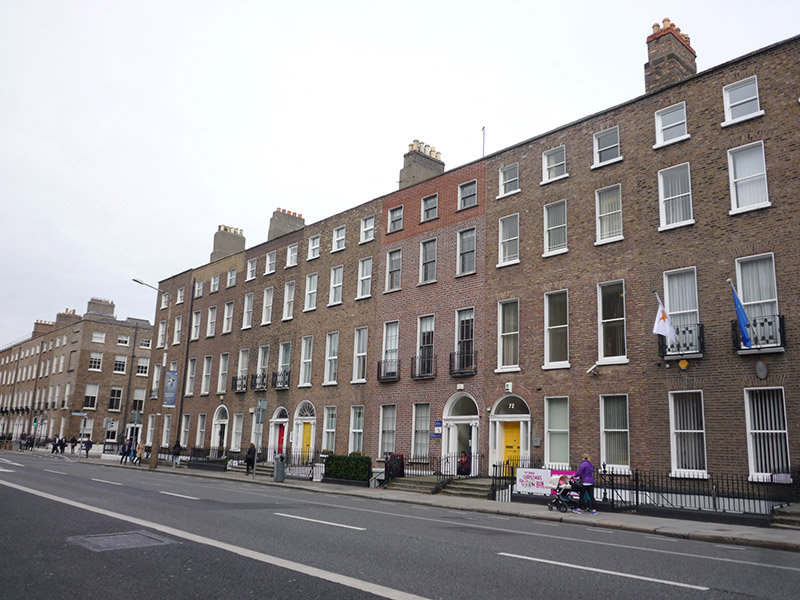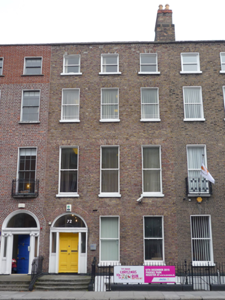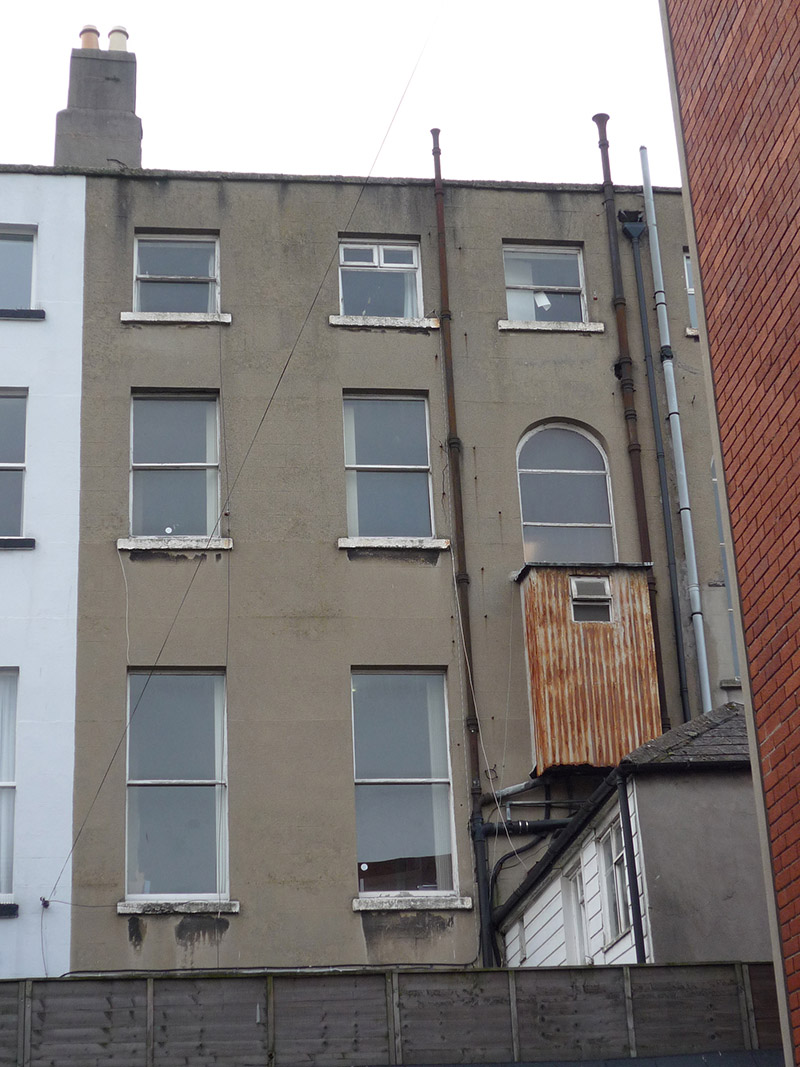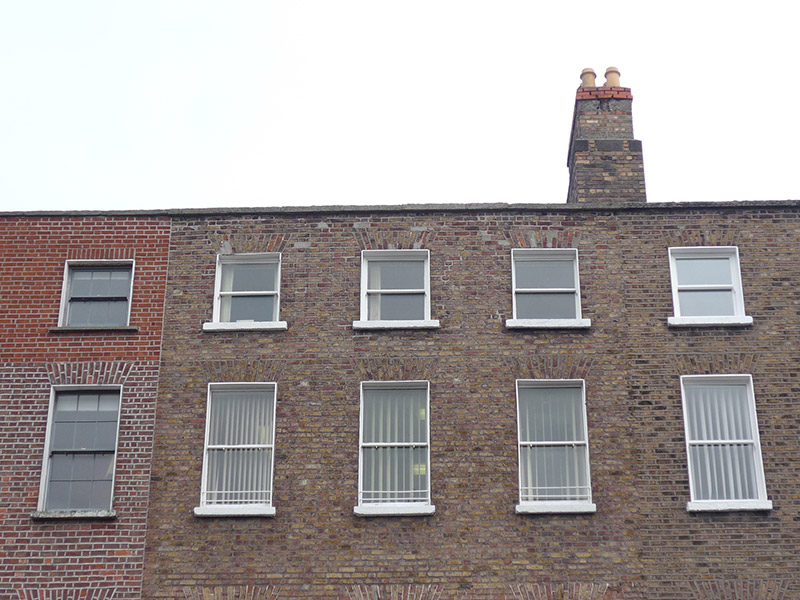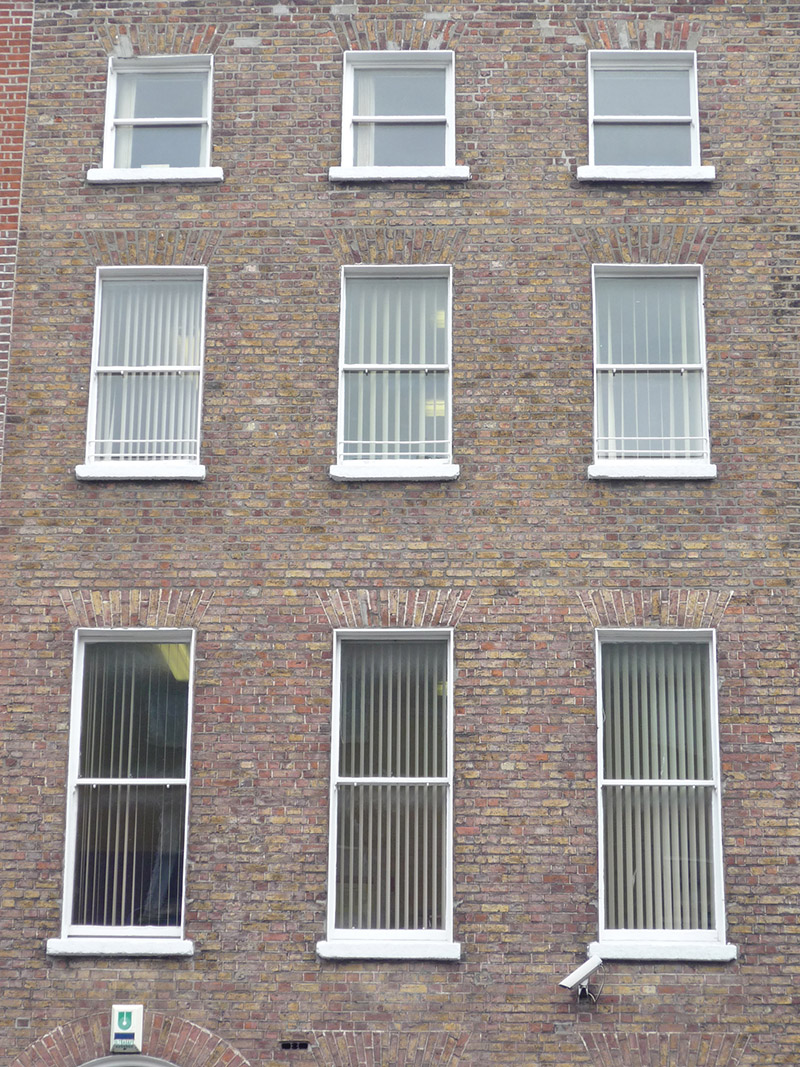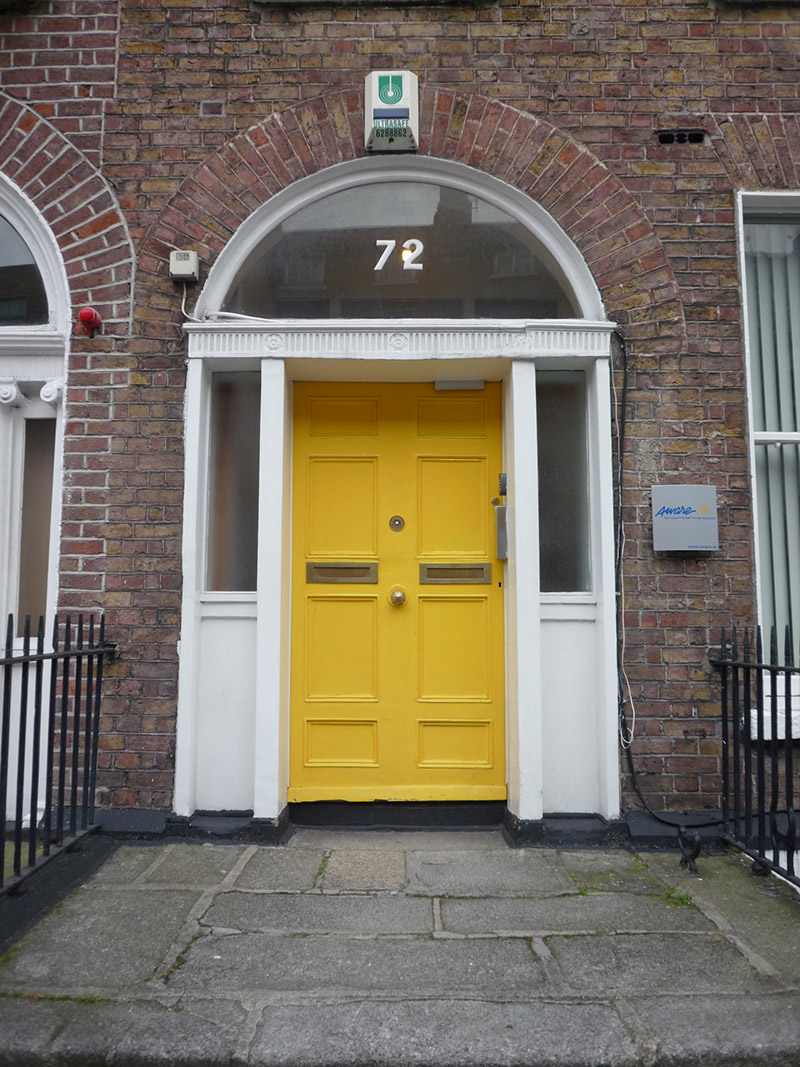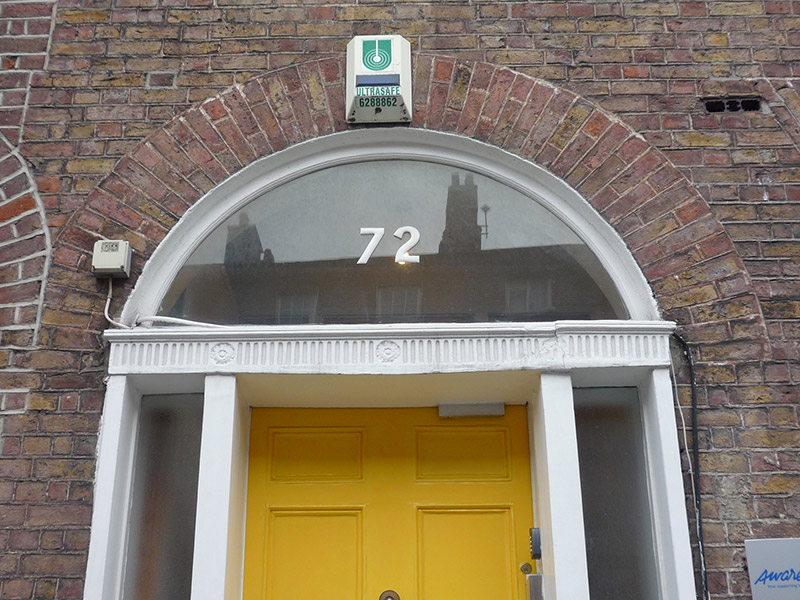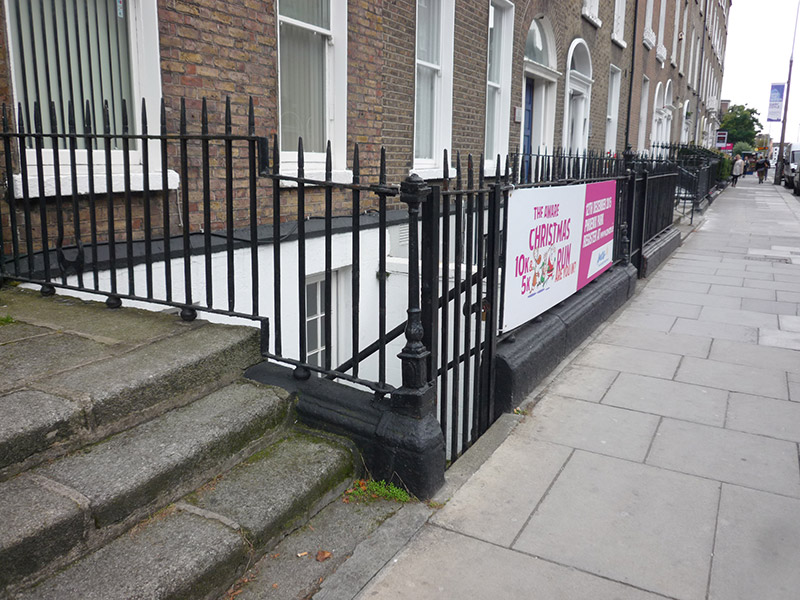Survey Data
Reg No
50930250
Rating
Regional
Categories of Special Interest
Architectural, Artistic
Original Use
House
In Use As
Office
Date
1780 - 1820
Coordinates
316323, 232933
Date Recorded
20/10/2015
Date Updated
--/--/--
Description
Terraced three-bay four-storey over basement former townhouse, built c. 1800, with two-storey return to rear (north) elevation having corrugated-iron built sanitary out-shoot. Now in use as offices. M-profile roof, hipped to west end, concealed by refaced brick parapet with masonry coping, shouldered chimneystacks (brick to south, rendered to north) to east party wall with red brick coping and lipped yellow clay pots. Parapet gutters with uPVC downpipe to rear (north). Brown brick walling laid in Flemish bond (refaced to third floor), rendered basement walls beneath granite plinth course. Rendered walls to rear (north). Square-headed window openings with brick voussoirs, patent reveals and granite sills. Plain rendered surrounds to rear (north) and basement of south elevation, one round-headed opening to second floor rear. Largely one-over-one sliding timber sashes with horns (ogee to ground and first floors, convex to upper floors), replacement multi-paned timber casement windows to basement. Some recent timber casements to rear (north). Iron guard rails to second floor windows on south elevation. Round-headed door opening to principal elevation (south) with brick voussoirs, reveals, moulded cornice over fluted frieze with rosettes, carried on replacement piers flanked by plain sidelights with replacement plain fanlight over timber panelled door. Granite entrance platform with cast-iron boot scraper, approached by three granite steps, flanked by iron railings with decorative cast-iron corner posts over granite plinth enclosing basement area. Concrete steps to basement with replacement door beneath entrance platform. Enclosed yard to rear (north).
Appraisal
Despite the loss of some historic fabric, this typical Georgian townhouse forms part of a relatively intact terraced row. Leeson Street Lower is characterised by well-proportioned late-Georgian brick terraces which display restrained detailing and classically-styled doorcases. The main route from St. Stephen’s Green to Donnybrook, Leeson Street remained largely undeveloped until the late-eighteenth century and was almost entirely complete by 1836.
